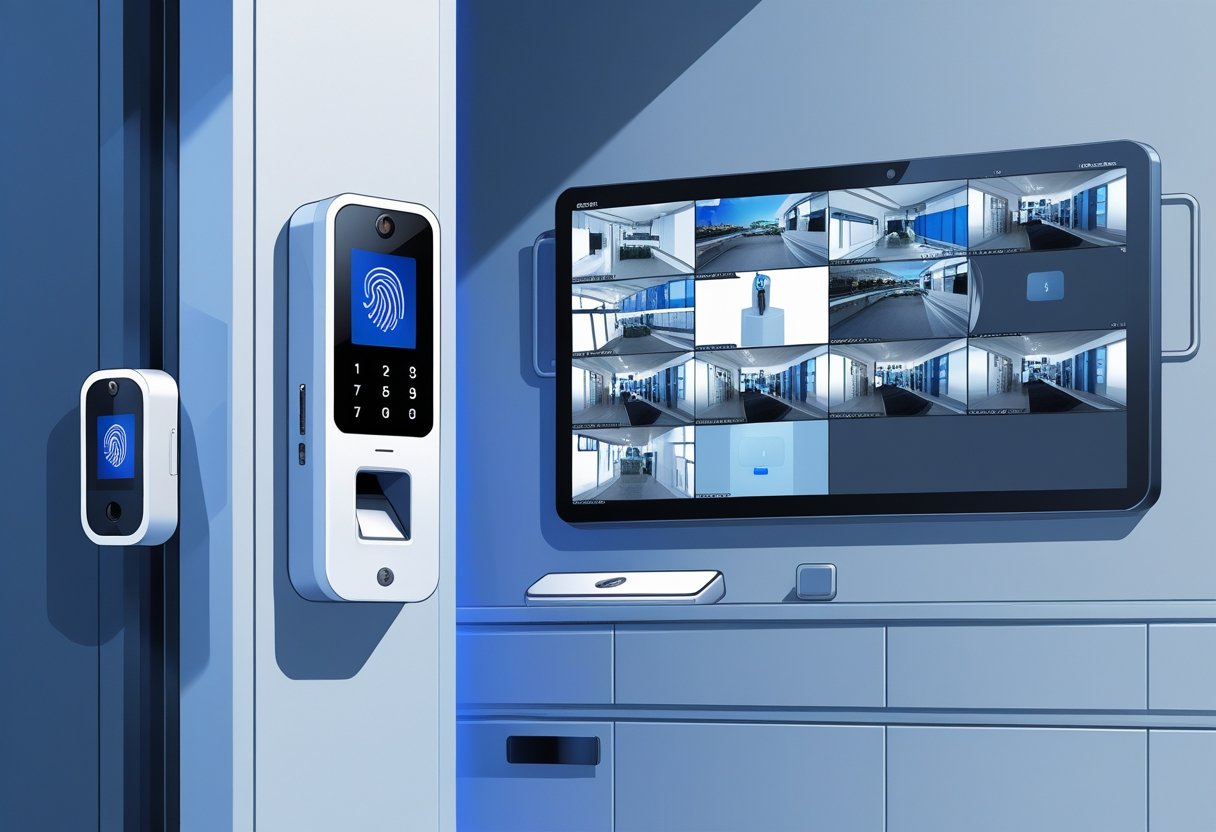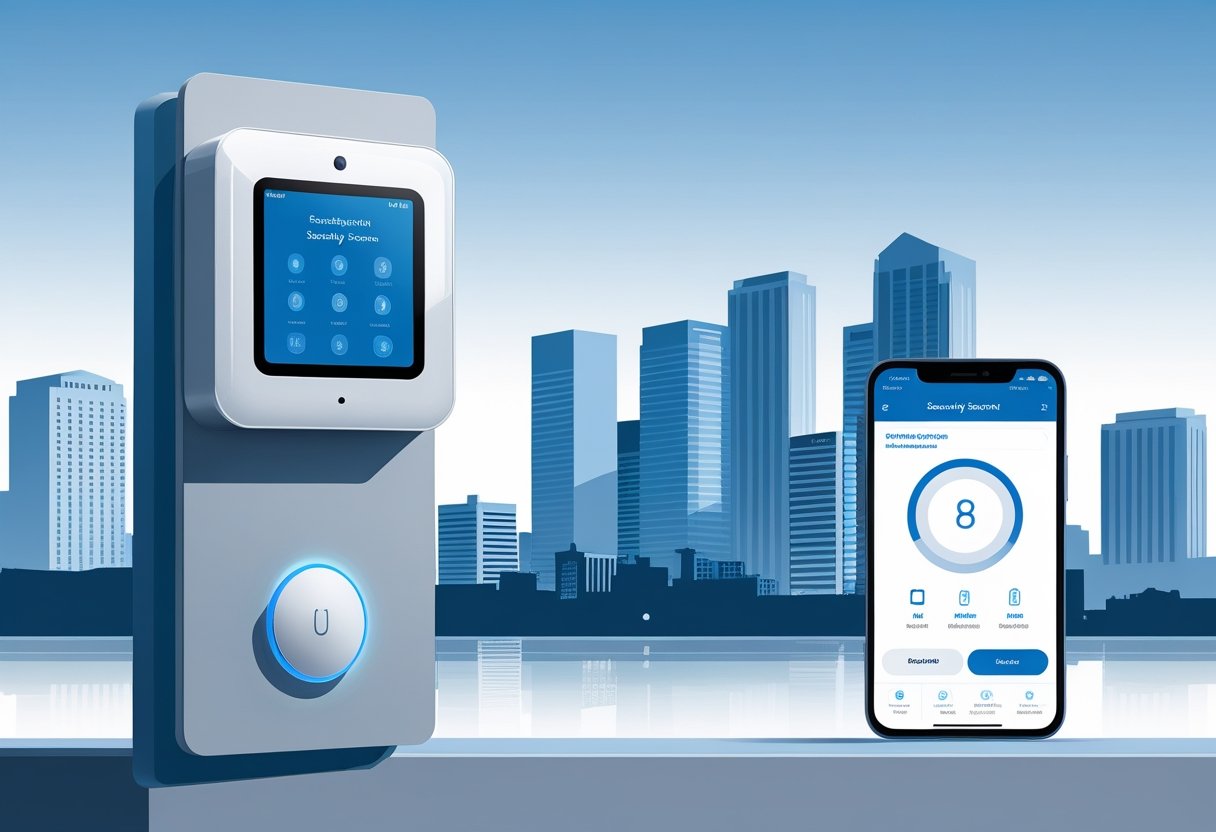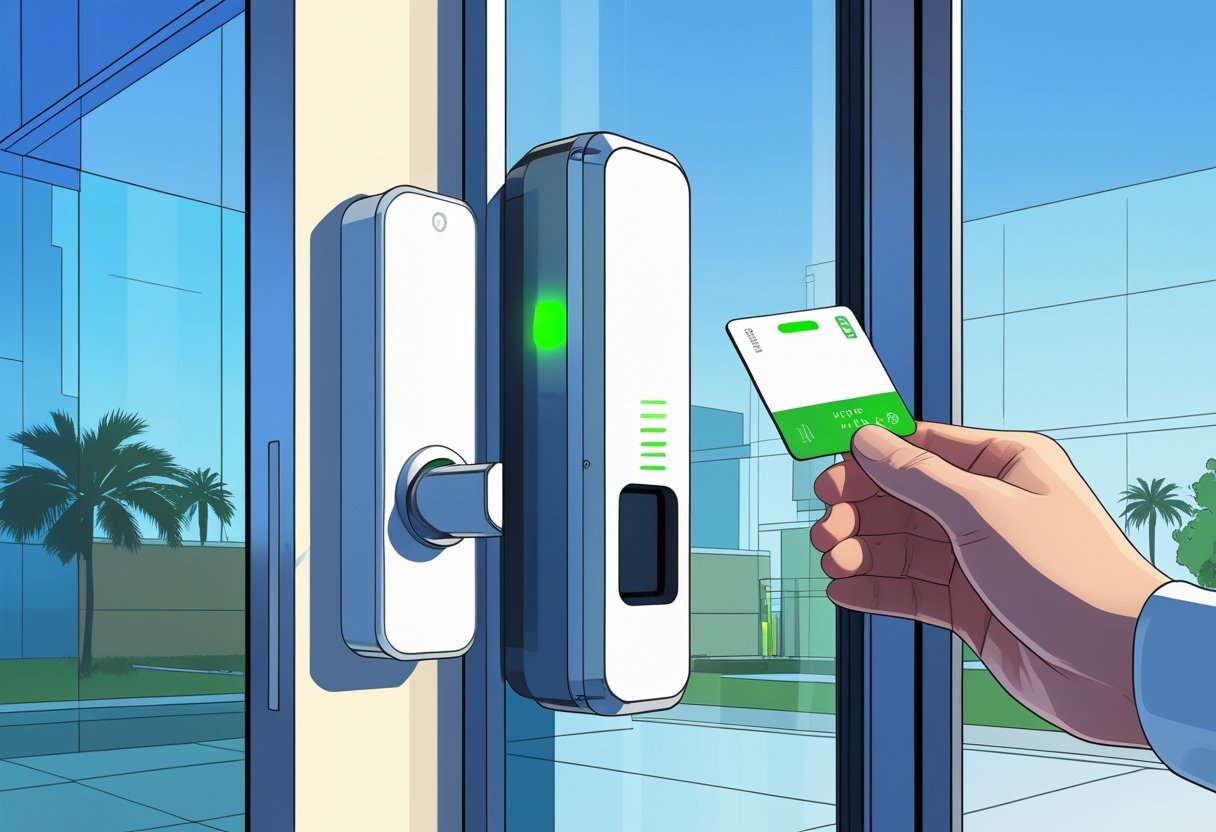Access control and video monitoring are essential components of a modern security strategy, especially for businesses in the greater Houston area. Implementing a combination of these systems not only enhances security but also streamlines operations, allowing you to respond to potential threats in real-time. By integrating video surveillance with access controls, you create a cohesive security framework that increases visibility and accountability.
The ability to monitor who enters your premises while simultaneously recording activities ensures that you are always one step ahead of potential security breaches. With advanced features available today, such as remote access and real-time alerts, you can manage your security from anywhere. This level of oversight is invaluable, particularly in a bustling environment like Houston, where rapid responses are crucial.
Exploring the advantages of access control and video monitoring together can significantly improve the safety of your assets and personnel. As you consider your options, recognize that this integrated approach not only provides peace of mind but also enhances operational efficiency.
Understanding Access Control and Video Monitoring Combo
Combining access control and video monitoring creates a robust security solution tailored to your needs. This integration enhances response capabilities and provides comprehensive monitoring for your premises.
Definition and Core Principles
Access control involves systems that manage who can enter certain areas, ensuring only authorized individuals gain access. This typically includes various methods such as keycards, biometric scanners, and PIN codes.
Video monitoring, on the other hand, uses cameras to record and observe activities in real-time. This visual surveillance helps in assessing events as they unfold and provides a reliable record if incidents occur.
When you integrate these systems, you form a security network that not only restricts access but also visually documents interactions and potential threats. Together, they enhance accountability and operational oversight.
Key Components of Combined Systems
An integrated security system relies on several key components working harmoniously. These include:
- Access Control Devices: Keycards, biometric scanners, and electronic locks are vital for restricting entry.
- Video Cameras: Surveillance cameras capture live feeds and record footage for later review.
- Monitoring Software: This software allows you to manage both systems from a single interface, enabling real-time alerts and easy navigation through recorded footage.
Furthermore, combining these components increases situational awareness, allowing for immediate responses to potential threats or breaches. Reliable network infrastructure is crucial to support the bandwidth-intensive needs of both systems.
How the Combo Enhances Security
Integrating access control with video monitoring significantly strengthens your security measures. For instance, when someone attempts unauthorized access, the linked video surveillance can instantly capture the event and alert security personnel through notifications.
This dual-layered approach improves response times and provides critical context during incidents, allowing you to make informed decisions quickly. Moreover, centralized management of both systems streamlines operations and enhances efficiency.
For businesses in the greater Houston area, implementing this combined system can result in heightened security and peace of mind, ensuring your assets and personnel are effectively protected.
Functional Integration of Access Control and Video Surveillance
Integrating access control systems with video surveillance enhances security protocols and streamlines monitoring. This combination allows you to maximize the effectiveness of both systems, providing real-time insights and facilitating quicker incident responses.
Interaction Between Access Points and Cameras
When access control systems and cameras operate in tandem, they create a cohesive security environment. Each time an access point is engaged, the corresponding camera can automatically adjust to focus on the area.
Access logs from the control system can trigger specific camera feeds to display relevant activity. This interaction ensures security staff have immediate access to pertinent video feeds during potential security events, making response efforts more efficient.
Event-Driven Video Recording
Event-driven video recording plays a crucial role in security management. This feature allows your cameras to automatically begin recording when specific access control events occur. For instance, if a door is accessed at an unusual hour, the linked camera will activate recording, capturing critical footage.
This method not only conserves storage space by avoiding unnecessary footage but also provides crucial evidence in case of incidents. Synchronizing video recording with access events enhances your security response strategy, allowing for thorough investigations based on real-time data.
Real-Time Alerts and Incident Response
Real-time alerts are essential in any integrated security system. By linking access control actions with video surveillance, you'll receive immediate notifications on security breaches or unauthorized access attempts.
When an alert is triggered, security staff can instantly review live video feeds to assess the situation. This immediate access is vital for formulating efficient responses to incidents. Quick access to access logs paired with video footage empowers your team to make informed decisions in the field, enhancing overall security protocols.
This integration provides a proactive stance on security, ensuring that your premises remain protected consistently.
Essential Technologies and Devices for Combination Systems
Combining access control with video monitoring requires specific technologies and devices that enhance security and usability. Key components include keycards, mobile credentials, open protocols for interoperability, and various sensors that detect and respond to intrusions.
Keycards and Mobile Credentials
Keycards remain a popular solution for access control. They grant entry to authorized users, ensuring physical security. You can utilize standard keycards or more advanced technology, such as smart cards that use encryption for added protection.
Mobile credentials are also gaining traction. By leveraging smartphones, you can access secured areas through a mobile app. This method simplifies user management and provides options for temporary access.
Together, these technologies help streamline the verification process and enhance security measures.
Open Protocols and Interoperability
Open protocols play a critical role in ensuring that your access control and video monitoring devices work seamlessly. For instance, systems built on the ONVIF standard can communicate effectively, allowing different manufacturers’ devices to function together. This compatibility is vital for expanding your security system without being locked into one vendor.
You benefit from increased flexibility as you can choose devices based on performance and price rather than manufacturer limitations. This openness fosters innovation, leading to more effective security solutions tailored to your needs in the greater Houston area.
Motion Detectors and Sensors
Integrating motion detectors with access control systems significantly enhances security. These sensors detect unauthorized movement and can trigger alerts or recordings to your video surveillance system.
Types of sensors you can choose from include glass break sensors, which specifically respond to the sound of breaking glass, and standard motion sensors that monitor broader movements. These devices can be easily incorporated into existing infrastructure, providing an additional layer of protection.
Effective placement of these sensors is crucial for optimal performance. They should cover entry points and monitored areas to ensure thorough surveillance and quick response times in case of potential breaches.
Alarm System Integration and Automated Workflows
Integrating alarm systems with access control systems enhances security and streamlines responses to incidents. Effective collaboration between these components creates a robust security framework, allowing for automated workflows that improve safety and efficiency.
Linking Alarms to Access Events
Linking alarm systems to access control events provides real-time awareness of unauthorized access attempts. When a breach occurs, the alarm system activates immediately, notifying security personnel.
By connecting these systems, you enable automated logs of access events. For example, if a door is forced open outside of designated hours, the alarm triggers and records the event. This integration helps prioritize alerts, allowing your team to respond faster.
Additionally, the data generated can be analyzed for patterns in unauthorized attempts, offering insights for refining security protocols. Overall, this direct link fortifies your facility against potential threats.
Automated Responses to Security Breaches
Automated responses are crucial when handling security breaches. An integrated system can perform predefined actions without manual intervention. For instance, upon triggering an alarm, your system can lock down affected areas instantly, halting further access.
Alerts can be sent to security personnel via mobile devices, ensuring immediate awareness. This rapid response can significantly reduce response times during critical incidents.
Moreover, integrating video monitoring with alarm systems allows for real-time verification of threats. You can receive live footage during alarms, aiding in decision-making. This all-encompassing approach not only streamlines your security operations but also enhances safety for everyone on your premises.
Implementation Strategies and Best Practices
Successfully integrating access control and video monitoring systems requires careful planning and execution. Key strategies involve assessing your existing infrastructure, ensuring compatibility, and training your security staff effectively.
Assessing Existing Infrastructure
Before implementing an integrated security system, evaluate your current infrastructure. This includes examining existing access control and video surveillance equipment.
Identify components that support open protocols, as this facilitates seamless integration. Assess the wiring, network capabilities, and software platforms currently in use. Ensure they can handle the combined load of video monitoring and access control data.
Create a detailed inventory of your systems and map out areas that require upgrades. Understanding your baseline is crucial for effective implementation.
Ensuring Compatibility and Scalability
Compatibility between systems is vital for smooth operation. Ensure your access control and video surveillance systems can communicate efficiently. Look for manufacturers that support open protocols, which enhance interoperability among devices.
Plan for scalability by selecting solutions that accommodate future growth. As your needs evolve, the system should easily integrate new cameras or access points without significant overhauls.
Consider cloud-based solutions that offer flexible scalability and remote monitoring features. This flexibility is essential for adapting your security measures to changing circumstances and potential expansions.
Security Staff Training and Management
Training your security staff is critical for the effective use of integrated systems. Provide them with comprehensive training on both access control and video monitoring functions. This will enable them to respond to incidents promptly and appropriately.
Encourage ongoing education to keep staff updated on the latest technologies and security protocols. Implement regular drills and simulations to practice response scenarios.
Establish clear management guidelines that outline roles and responsibilities. Proper management of your security personnel will enhance the overall effectiveness of your integrated system, ensuring a smooth operation in the greater Houston area.
Frequently Asked Questions
The integration of access control and video monitoring systems can significantly enhance security for your property. Understanding specific features, technologies, and industry standards is crucial to making informed decisions about these systems.
How does integration between access control systems and video monitoring enhance security?
Integrating access control with video monitoring allows for real-time visibility into access points. You can see who enters or exits while simultaneously recording video footage, providing a comprehensive security overview. This synergy helps in identifying potential threats as they occur and facilitates quicker responses.
What technologies are involved in synchronizing video surveillance with access control?
Various technologies support synchronization, including IP cameras, access control panels, and management software. These systems can communicate with each other via network protocols, enabling the sharing of data such as access logs and video feeds. Utilizing advanced analytics further enhances the effectiveness of synchronized security systems.
What are the benefits of using a unified platform for video and access control management?
A unified platform streamlines operations by allowing you to manage both video surveillance and access control from a single interface. This efficiency can save time during investigations, as you can quickly review video linked to access events. Additionally, centralized management improves system performance and reduces operational complexity.
Are there any industry standards for interoperability between access control and video monitoring systems?
Yes, industry standards such as ONVIF (Open Network Video Interface Forum) promote interoperability between devices from different manufacturers. Adhering to these standards ensures that your systems can communicate effectively. It also offers you flexibility in selecting components from various vendors while maintaining system compatibility.
How do mobile apps support remote management of access control and video surveillance systems?
Mobile apps enable you to manage access control and video surveillance systems from anywhere. You can receive alerts in real time, view live video feeds, and grant access remotely. This capability enhances your ability to respond to security events promptly, whether you are on-site or away.
What privacy concerns should be considered when implementing a video monitoring and access control system?
Implementing these systems raises several privacy concerns, including data security and surveillance ethics. It is essential to comply with local regulations on video surveillance to protect individual privacy rights. You should also ensure that data is securely stored and only accessible to authorized personnel.
.svg)



.svg)


.svg)



